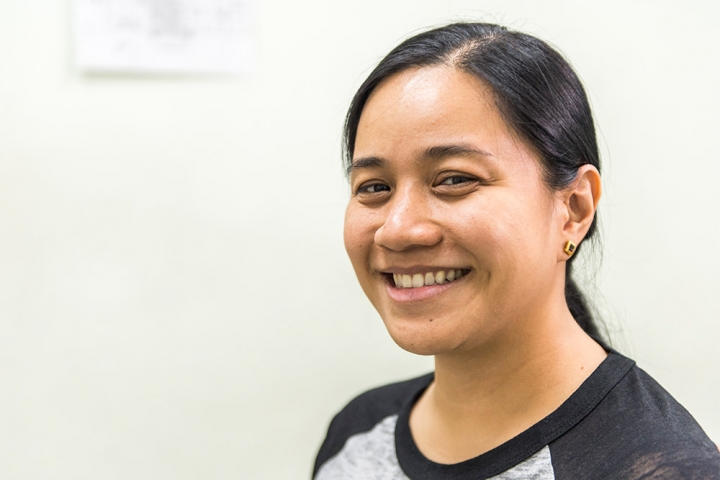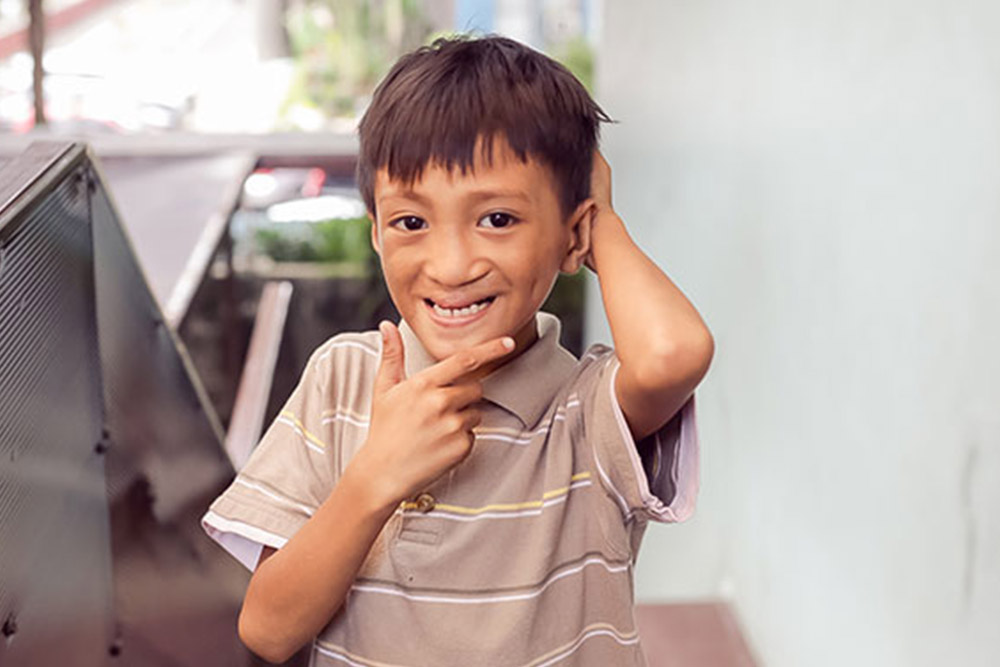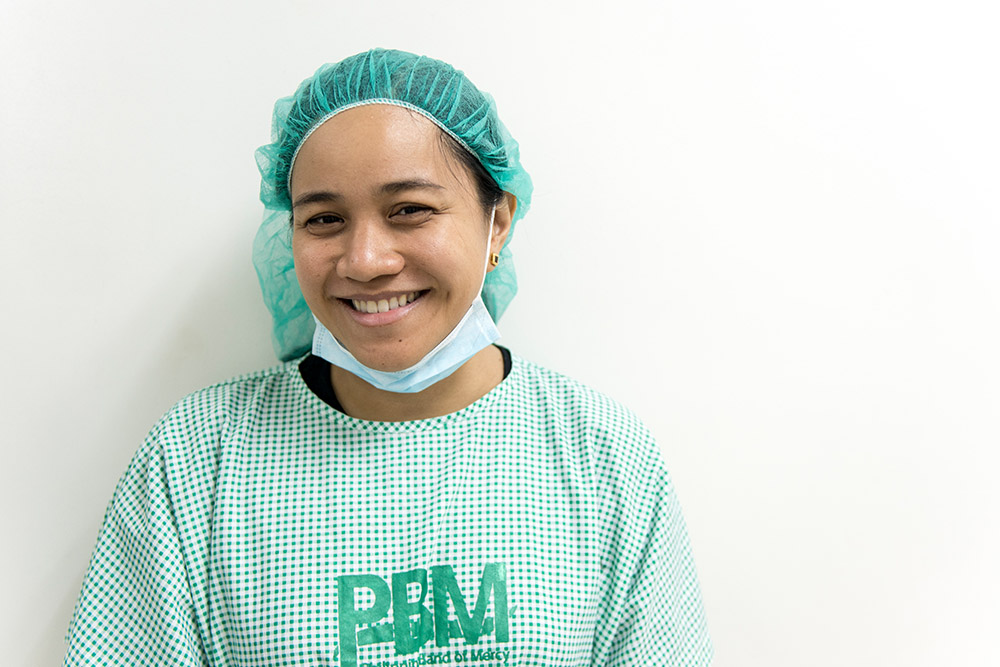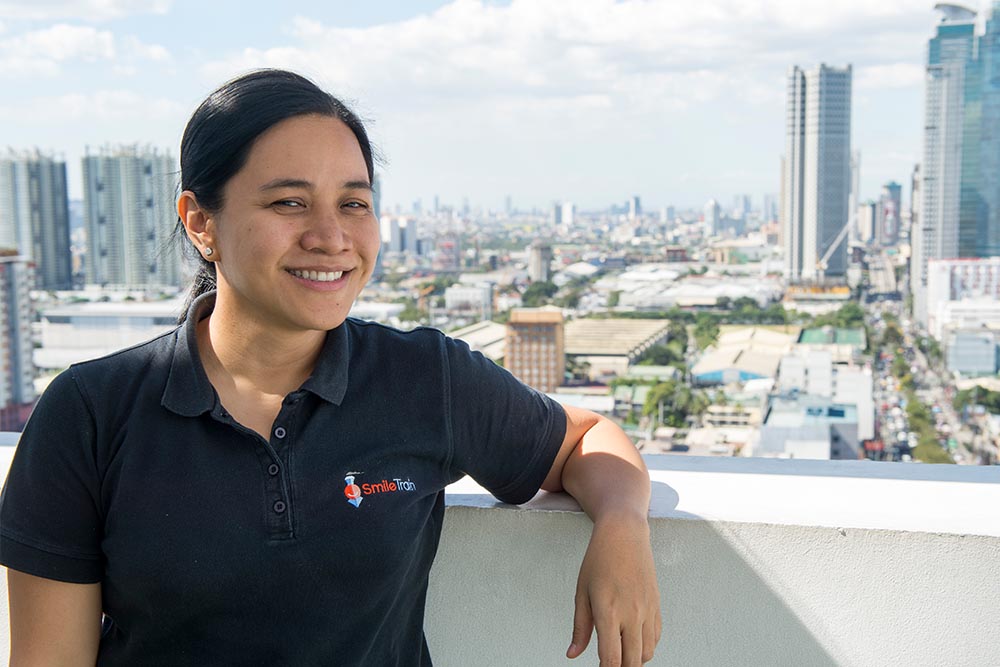Kimmy Flaviano Steers Smile Train to the Farthest Islands
The Philippines has unique challenges for children receiving cleft treatment. Kimmy is more than up to meeting them.

Kimmy Coseteng-Flaviano is Smile Train’s Area Director for South East Asia. Based in Manila, she oversees Smile Train’s programs in the Philippines, Indonesia, and other countries in the region. We recently spoke with her about her journey to Smile Train, how people think of clefts in her part of the world, her most memorable patients, and much more!
How did you come to Smile Train?
Prior to coming to Smile Train, I was based in Singapore doing public affairs and policy work for Johnson & Johnson. I decided to return home to the Philippines and reached out to my former colleagues and managers here, asking that if they knew of anything that would fit me, to just let me know. One of them, who I used to work with at Pfizer, ran Smile Train programs in the Philippines for a couple of years. He was going back into corporate, and he said, “You know what, I just left Smile Train, and I think this is right up your alley!” He was right; I’ve been here since then, May 1, 2010.
Do you have a personal connection to clefts?
I had never actually seen anyone with a cleft before coming to Smile Train, but I had always been in the field of healthcare, so prioritizing patients has always been an important thing for me.
How do you describe what you do?
I started at Smile Train looking after programs in the Philippines. At that time, we were focused on the programs side, which meant managing our local partners, making sure that they were in compliance with our safety and quality protocols, and finding out how we could reach more patients in need of treatment. That role has evolved since then, so that right now, we’re also looking after governance and compliance, working with government and external regulators about managing nonprofits, and also fundraising. Just a couple of years ago, I was also given responsibility for Indonesia, so we’re also doing some fundraising there apart from the programs. Plus, now that we’re growing a little bit, I am managing a few other people, too.

Are there any patients you’ve met that particularly stand out?
Aldrian’s story stands out because it’s so unfortunate in terms of what he’s been through, what his family’s been through. I think what’s great about it now is that his family’s actually seeking help, so he’s attending speech therapy sessions now almost every week — before COVID-19, his grandmother would bring him to the partner hospital for his sessions every week even though she had a million other things to do, and now he’s attending remotely. She says it’s so important to make sure that he can speak better before he goes to school because then it minimizes the bullying.
Sofia is also a great story. I see her now a lot; we invite her to different events. I met her when she was two or three years old and now she’s eight and she’s a totally different person; she’s more confident. You know, though the years and all these interactions, you see people’s personalities evolve as you work with them. It’s been amazing.
There’s another patient, Santi. He was an adult when he came to a Smile Train partner, and he studied to be an architect, but he couldn’t find a job because of his speech issues. We invited him to attend a workshop where people could do mock interviews, learn how to do CV’s, dress up for interviews... and one of the companies that joined us that day hired him as a draftsman. He told me later that before, when he would apply for a job, the bullying started as soon as he walked into the room. And this time, he was treated with respect as a member of a team. That’s pretty fantastic.

What do you say when you first meet a patient? Their family?
When you go to a Smile Train partner hospital, it’s a different vibe. These are people who need help, but they’re in a place where they know they’re going to get it, so it’s very positive and very happy. It’s not like they’re suffering or scared or anything like that — there is, of course, anxiety about getting surgery, and we talk to them about that, but they know they’re in the right place. They also see around them children and families who have already been helped, so they know that this is a real thing and that whatever happens, they will walk away with the free cleft treatment they came for. Some of them traveled very far, so we try to figure out how else to help them, like by referring them to other partners who may have facilities for them to stay in or who may be able to help with their transportation and all that.
How do you locate and treat patients in remote places?
In Indonesia, we work with the armed forces, who have people all over the place. We’re very fortunate that there are plastic surgeons in their armed forces who are utilizing army hospitals in different locations across the country to do cleft surgeries. They schedule all these outreach initiatives, and when they find patients, they bring them to these centers so that they can provide care, even in these remote areas. They’ve probably helped us locate and identify 12,000 patients already in the last four to five years. It’s pretty amazing. We’re also working with the Indonesian Police and did a Cleft Week together last year, where they operated on like 500 patients in a week. In Indonesia, people trust the armed forces and the police and aren’t afraid to work with them. So, reaching more patients means we cannot do it alone, we need to work with different people, organizations, even other charities.
In the Philippines, it’s a bit different. Here, we’re working on raising awareness through social media and with celebrity ambassadors. When celebrities talk about us on their social media channels or on TV, we get all kinds of calls and inquiries from patients who have never heard of Smile Train, so we’re trying to do more on that front to get the awareness out. In a country with 7,000+ islands, it’s difficult to communicate with everyone, but our partners have been helpful — some are also promoting the surgeries in their hospitals. We’ve also tried reaching out to midwives doing births in rural areas to make sure that if they catch a baby with a cleft, they know where to refer them. So, we have many different types of initiatives, and we need to try to cover all our bases because there’s no one way we reach patients. Smile Train has been very understanding of these situations and has even provided grants that we can offer to our partners to help them make sure patients have transportation to the hospitals.

Are there countries in your region that you wish we were in but are not?
We have been trying to reach out to patients in Papua New Guinea, East Timor, and Fiji. It’s a little more difficult because it’s a different space — we don’t know anybody in those countries yet, but we are working now on Papua New Guinea because there is a surgeon there who was being trained by another partner surgeon, so we’re hoping that, within a year or so, we will be able to set up a partnership with him there. For East Timor, it’s also a little bit difficult, but the Indonesian Army has been very helpful; they have an agreement with the East Timorese government that they can actually do surgeries. We’re trying to find ways.
What are the biggest challenges facing cleft care in South East Asia, and how is Smile Train addressing them?
There are a few challenges we’re facing. One is awareness, and we are trying to get the word out as much as we can through different channels, whether by working with different organizations or medical professionals — like midwives’ associations or the pediatricians’ societies. One of the other challenges is a lack of qualified cleft professionals. In the Philippines and Indonesia, for example, there are very few speech pathologists, so just having people who are qualified to provide these services for us is a challenge. In the Philippines, most people who graduate as a speech pathologist move overseas after they finish as they may have better opportunities in another country, which makes it very difficult for us to find people who are in the country and willing to give up maybe a day or half a day of their practice to devote themselves to clefts. It’s the same with orthodontists. The other challenge we have is bringing the patients to the partner centers because most of them are poor and don’t have the capacity or the financial abilities to come in all of the time. So, for speech therapy where we would see the most impact if they would come every week, they wouldn’t because sometimes the cost of transportation would be an issue, or nobody could bring them because their parents maybe have five, six, seven, eight, even nine other children to take care of. So, they had good reasons, but when patients can only come to speech therapy once a month, or once every other month, that doesn’t help them. When COVID-19 hit, we were able to set up telehealth speech sessions that have helped us reach these people in a new way. We currently have more than 100 patients enrolled and it’s been successful so far.
There used to be only one college teaching speech pathology in the Philippines, and now there are four. I’ve been exploring working with Smile Train to hire speech therapists to work permanently at some of our centers here because we have some high-volume places where a lot of patients will need it, so if a speech pathologist is there and you give them a regular salary, then it might work.
Have you noticed any change in attitude toward children born with clefts since you’ve been working with Smile Train?
Yes. There are a lot of misunderstandings about clefts in this region, even among educated people, and we’re trying to address that through awareness: We’re working with our partner doctors to speak to the media about clefts, and we try to educate the parents, too. We tell them, look — what you think happened isn’t what happened; clefts are a medical condition and we still don’t know a lot about what causes them. Also, a lot of who we call in the Philippines “Indigenous People” prefer not to seek intervention because they think everything’s natural, and this is what it is. In these cases, we need to work with people they trust, like health workers in their communities, for example, to explain why a child needs to get treated, that we want to do this so your child will have a brighter future and that it opens up other opportunities like going to school, getting a job, etc. So, we’re trying to work through different channels to be able to speak with them about stuff like that.
Where do you see cleft care and awareness in South East Asia in 10 years? How do you see Smile Train’s role in that?
I think the dream is for us to support or be a part of creating holistic cleft care centers around the region. If we could have one in every province or every city, that would be fantastic because then access would be easier, you wouldn’t have to travel five hours for a speech session that’s going to last an hour. Smile Train would have two roles to play in this: One would be to inspire more people to become part of it, to help people recognize that their skills or talents and expertise are needed in cleft care. And the second would be for us to then actually train them in how to provide this care in the best possible way. So, if we’re able to do that, you would see healthcare workers and the whole healthcare system here transformed.
What’s your favorite part of the job?
Meeting the patients, because that’s where the magic really happens, and you see them transformed. That’s just amazing. You meet the patient immediately after surgery and it doesn’t really say much; yes, the lip is closed, yes the palate is closed, but it doesn’t really say much. But then you see the child three, five years later and it’s like, “Wow, you’re a totally different person!”
Help advance Smile Train's lifesaving work around the world.
